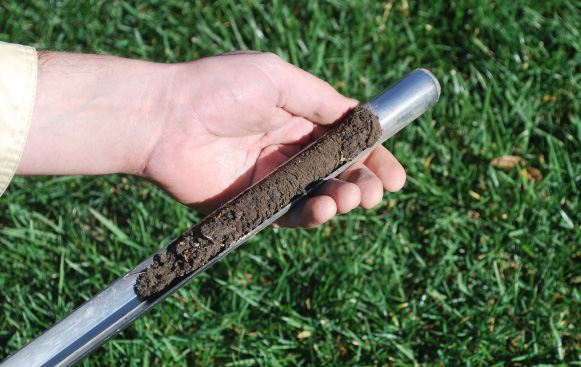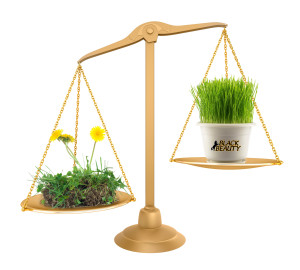
Soil Testing
The first step of a lawn care program, is to know your lawns nutrient content and pH levels of your soil. Each lawn is grown on a different soil type, which is the reason why every lawn is treated in a different way. Since lawns are grown on a wide variety of soil types, fertilizer requirements can vary greatly depending on what’s going on in the soil. Many nutrients tend to be over applied, resulting in imbalances in the soil and harmful effects on the lawn itself. This is why it is imperative to get your soil tested before treatments are applied to your lawn.

What is Soil pH?
A soil’s pH is the measure of its alkalinity or acidity based on a scale from 0 to 14. Zero represents harsh acidity, fourteen is extreme alkalinity, with seven being neutral. The pH level of a lawn’s soil should be in the 6.0 – 7.5 range. If pH levels become imbalanced, it can directly affect the availability of nutrients in the soil. Limestone derived products are applied to soil that is acidic, while alkaline soils require applications of sulfur products. Adjusting the pH of your soil may take several years but it’s crucial for proper nutrient uptake and plant health.
What is Lime??
Lime is commonly sold as ground agricultural limestone. It is considered a natural soil amendment rather than a fertilizer and furnishes important plant nutrients such as calcium and magnesium. Liming is done to help to reduce soil acidity (raise the pH level) and make soil more favorable for turf grass growth.
How much Lime should be applied?
Soil tests will indicate the amount of lime to apply in pounds per thousand square feet. Our fully trained professionals will match the need of your soil test results, to the amount of pure calcium carbonate indicated. Results of liming are slow to take affect and it can take a few years to adequately increase the soil pH level. Lime can be applied to a lawn any time of the year. However, it is usually done during the cooler seasons such as spring or fall, when lawn stresses are minimal.
